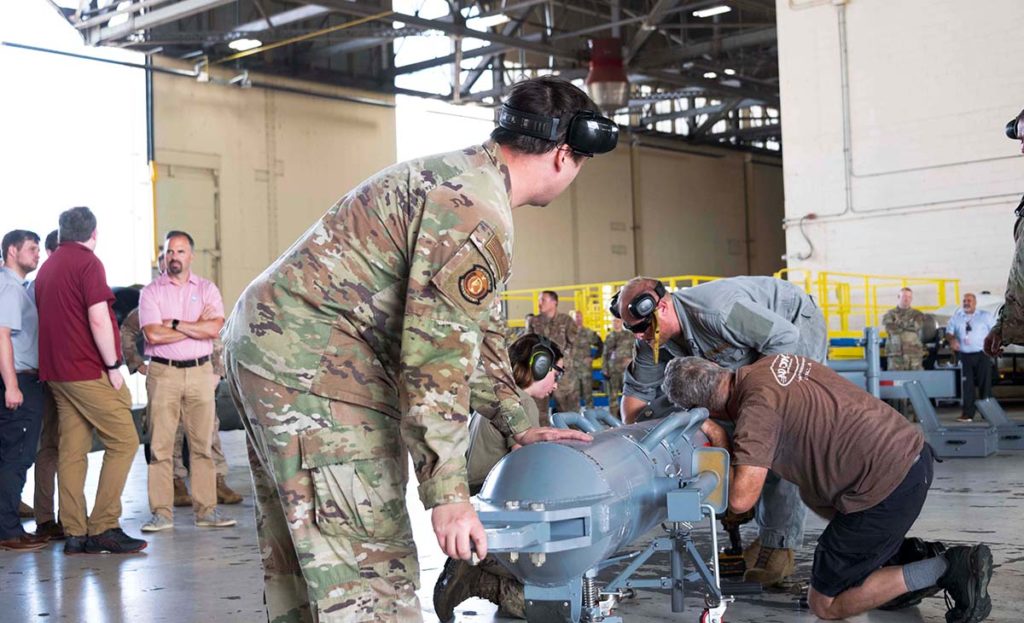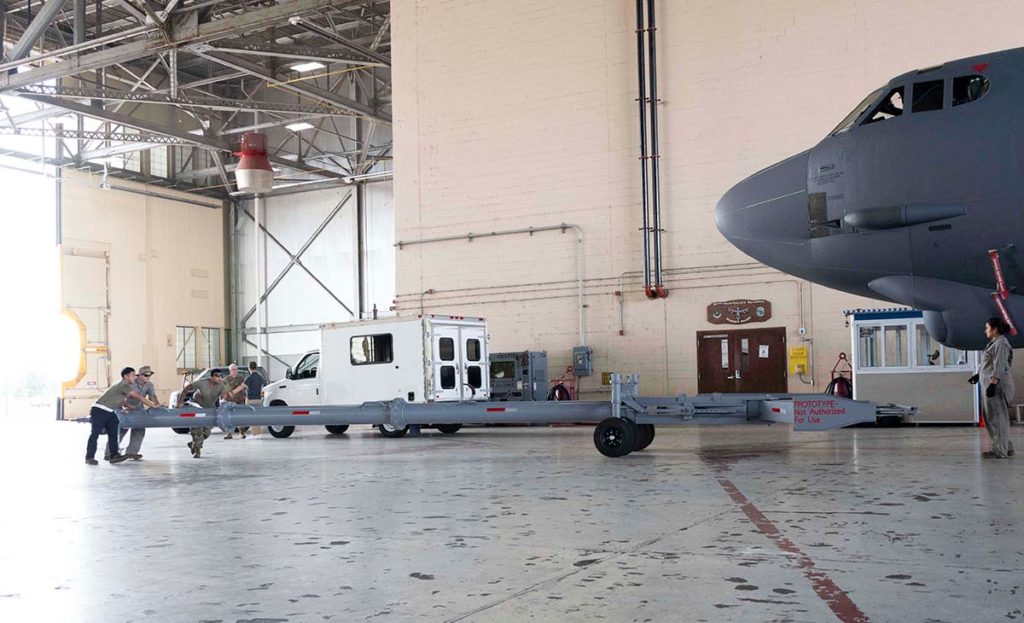In a remarkable example of applied engineering, four Louisiana Tech University College of Engineering and Science (COES) students — Owen Clyde, Gabe Collier, Nathan Lindblade, and Sam Whitsell — are leaving their mark on the U.S. Air Force’s B-52 Stratofortress fleet. In 2024, they unveiled a prototype for a revolutionary new towbar that is poised to reshape how the military transports and assembles one of its most iconic aircraft.
Developed through a partnership between Louisiana Tech, STRIKEWERX, the Air Force Research Laboratory, and the University of Dayton Research Institute, this project addresses an urgent operational need: the B-52’s towbar was slow to prepare and bulky to transport. The B-52, in service since 1955, has relied on a towbar design that presented significant logistical challenges.
Towbars are critical for positioning B-52s for maintenance and air operations, especially when the aircraft is deployed to remote locations requiring airlift support. The innovative design not only reduces transport prep time from two days to under 30 minutes, but also minimizes the space it occupies on military cargo planes, significantly improving logistical efficiency.
“We started by digging deep into the military’s standard documentation to understand what was needed,” said Clyde, the project’s lead designer. “Then we spent time at Barksdale Air Force Base, talking to the people who use the towbar every day and seeing firsthand what worked and what didn’t.”

Lindblade, who worked alongside Clyde, emphasized how critical those conversations were in shaping the final design. “By listening to the servicemembers, we identified key failure points in the old towbar,” he said. “That insight guided us to create something more reliable, user-friendly, and in line with military needs.”
The new towbar is a marked improvement: unlike its predecessor, which consisted of two cumbersome parts, the new design disassembles into three manageable pieces via flange-style connections. This not only makes transport easier, but it also significantly reduces setup time, helping to streamline operations in high-pressure environments.
While the engineering behind the towbar is impressive, the real impact may lie in the broader lesson it offers about education and innovation. STRIKEWERX project manager Hanna Beene praised Louisiana Tech’s commitment to real-world problem solving, noting that projects like this offer students invaluable hands-on experience. “Senior design projects are an opportunity to engage with industry standards and solve complex challenges,” she said. “Louisiana Tech’s engineering programs are designed to ensure students are well-prepared for the demands of the real world.”
For Whitsell, who worked on project management and prototyping, the collaboration with faculty and industry leaders made all the difference. “We had amazing support throughout the process,” Whitsell said, pointing to COES machine shop director Neil Rinehart and Dr. Henry Cardenas for their crucial guidance. “They helped us turn our concepts into a working prototype.”

STRIKEWERX Director Russ Mathers and Louisiana Tech Research Institute Executive Director Warren Ward are intimately familiar with the B-52. Both flew the craft during their military service. They reflected on the power of teamwork in driving the project forward. “A lot of the success comes from how well the team communicated and collaborated,” Mathers noted.
“These projects are more than just engineering exercises,” Ward added. “They’re gateways to professional careers, and the perseverance required here is key.”
For Collier, the most rewarding part of the experience was presenting the final product to Air Force leaders and seeing the tangible impact of their work.
It was incredible to hear the positive feedback from the Air Force and to know that our work could potentially support national defense. Seeing the prototype in action at Barksdale was a moment I’ll never forget.
– Gabe Collier
As testing progresses with B-52 maintainers from the 307th and 2nd Bomb Wings at Barksdale AFB, the towbar’s performance will be scrutinized in various operational conditions. The Air Force Global Strike Command expects testing to conclude by September 2025, marking a potential milestone in military logistics innovation.
This project not only highlights the ingenuity of Louisiana Tech’s students but also underscores the power of collaborative efforts between academia, industry, and the military. As the prototype moves closer to widespread adoption, it stands as a testament to how a thoughtful design can improve efficiency, reduce operational costs, and, ultimately, strengthen national defense.
